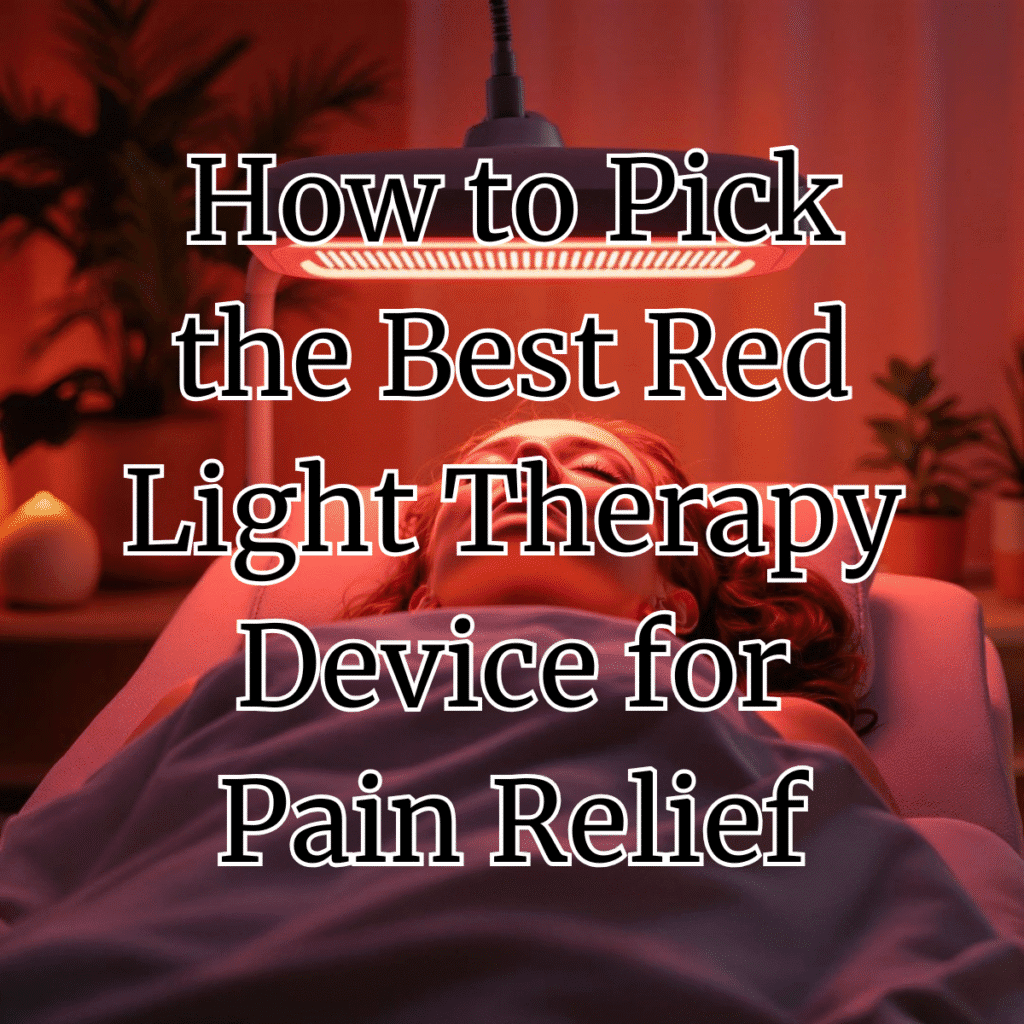Table of Contents
- Introduction
- How Does Red Light Therapy Help Acne?
- Blue Light Therapy for Acne
- Clinical Evidence and Efficacy
- At-Home Devices vs. In-Clinic Treatments
- Buyer’s Guide: Choosing a Red Light Therapy Device for Acne
- Tips for Effective Use of Red Light Therapy on Acne
- FAQ
- Deep Dive Podcast
- Where to buy?
- Conclusion
- Resourses
Introduction:
Acne vulgaris is a common skin concern for both teens and adults, and many are seeking non-pharmaceutical remedies to achieve clearer skin. Red light therapy (RLT) – using low-level red or near-infrared light – has emerged as a popular option among skincare enthusiasts and biohackers for treating acne. Advocates claim it can calm inflammation, speed healing of blemishes, and even prevent future breakouts. In this informational review and buyer’s guide, we’ll examine how red light therapy works for acne, the latest clinical insights and expert opinions, and how to choose the best at-home or professional RLT device for acne-prone skin.
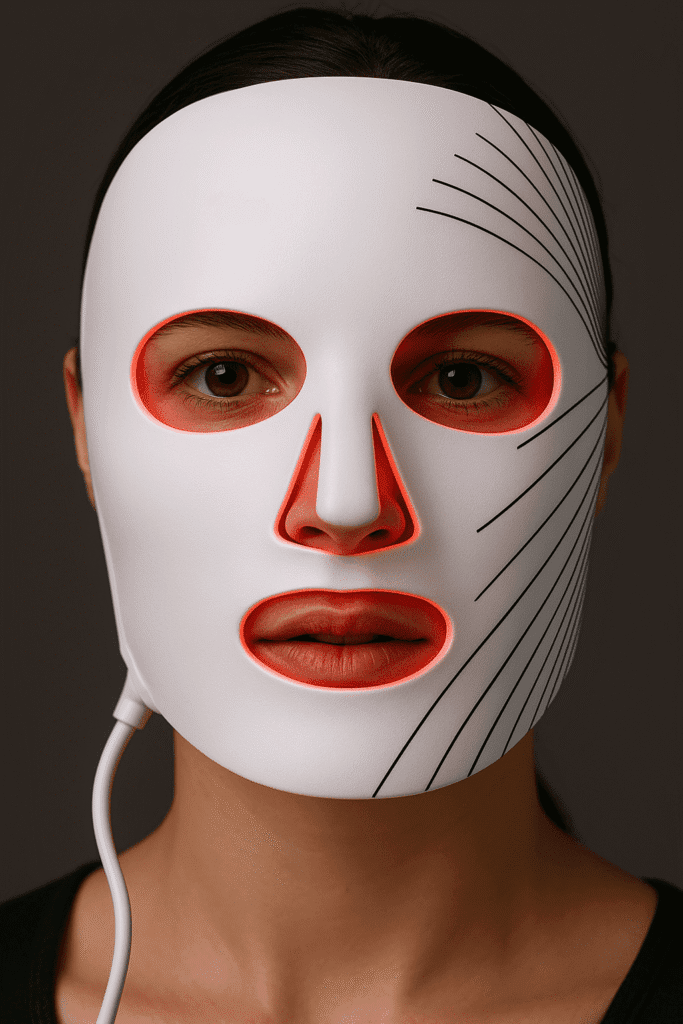
How Does Red Light Therapy Help Acne?
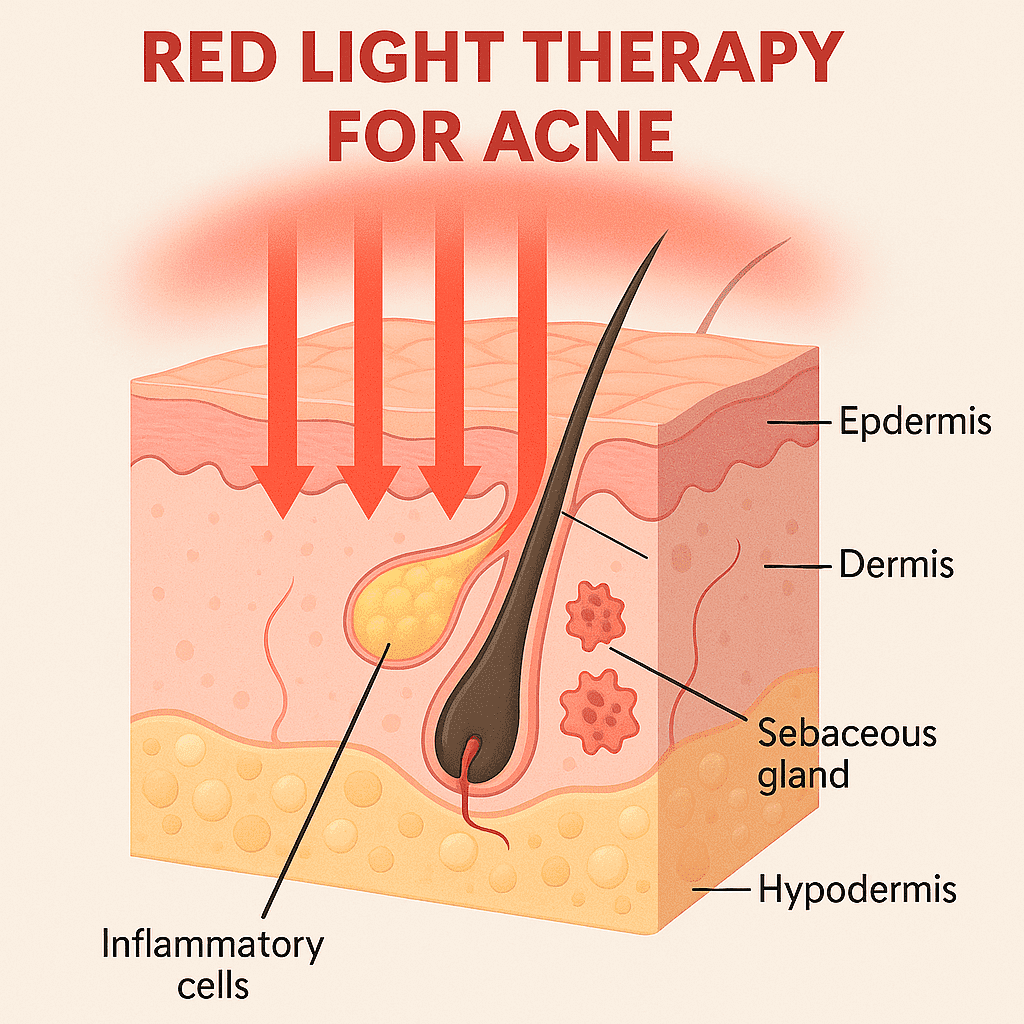
Red light therapy uses specific wavelengths of visible red light (typically 600–650 nm) to penetrate the skin and modulate cellular activity. Unlike blue light (which directly kills acne bacteria), red light works primarily by reducing inflammation and accelerating healing. Research shows that red light penetrates about 1–2 mm into skin, reaching the sebaceous glands and inflammatory cells. It can activate porphyrins (compounds produced by C. acnes bacteria) to a mild extent and, more importantly, downregulate inflammatory mediators – meaning it reduces the redness, swelling, and irritation of active acne lesions.
In acne models, red light has been found to decrease pro-inflammatory cytokines and neutrophils and to promote wound repair processes in the skin. Essentially, RLT helps calm acne flare-ups and supports the skin’s natural healing, leading to less inflamed pimples and potentially fewer acne marks.
Blue Light Therapy for Acne:
While red light therapy is effective for acne treatment, blue light therapy is also a key component in addressing acne. Blue light (typically around 415 nm) has been shown to target and kill Propionibacterium acnes bacteria, which are a significant contributor to acne development. Here’s why blue light therapy is essential for acne treatment:
- Kills Acne-Causing Bacteria: Blue light has antimicrobial properties that directly target the bacteria within the pores, helping to reduce the cause of acne.
- Prevents Future Breakouts: By reducing the bacterial load on the skin, blue light therapy helps to prevent future outbreaks, making it an excellent preventive measure.
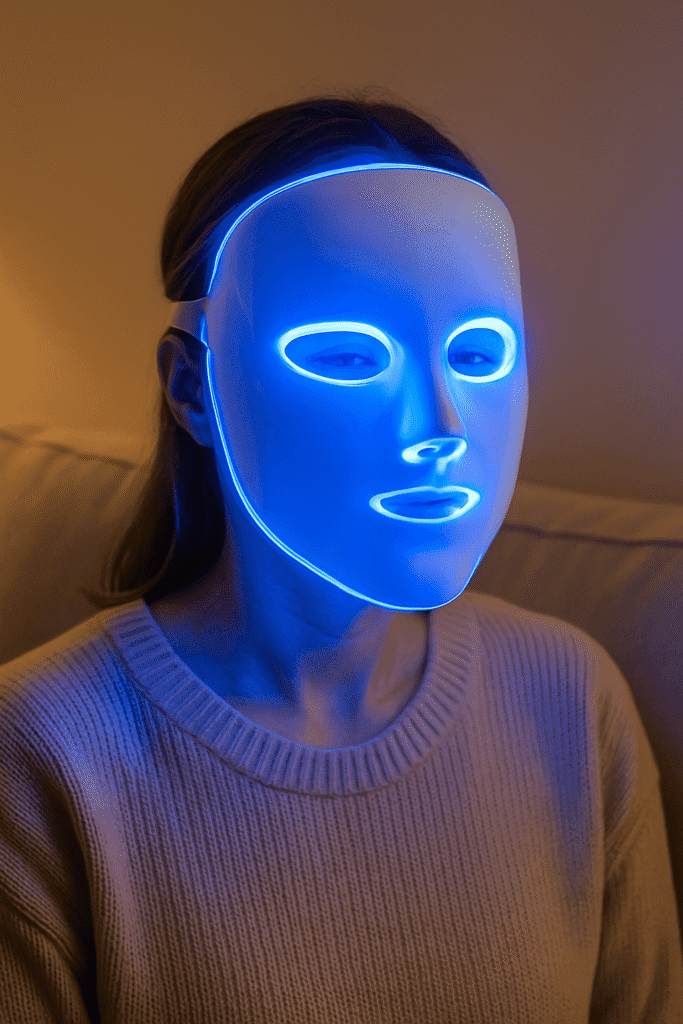
Many devices combine both red and blue light to create a comprehensive approach to acne treatment. Red light helps to reduce inflammation and speed healing, while blue light eliminates acne-causing bacteria. If you’re interested in maximizing your acne treatment, look for devices that offer both wavelengths.
Conclusion:
Both red and blue light therapy work synergistically to treat acne effectively. Red light reduces inflammation and accelerates healing, while blue light targets the root cause—bacteria. If you’re looking for a device that provides comprehensive acne treatment, seek out dual-wavelength devices that offer both red and blue light.
Clinical Evidence and Efficacy
Growing evidence suggests red light therapy can yield noticeable improvements, especially for inflammatory acne. A 2024 systematic review analyzed 35 studies (1,185 patients) using visible light therapy for acne and found that 92% of patients experienced at least partial clearance of their acne lesions with light-based treatment. On average, total pimple counts dropped by ~43% after about 4 weeks of regular treatments. Most of these studies involved blue or blue+red LED therapy, underscoring that multiwavelength approaches are most effective. Red light on its own has shown promise as well.
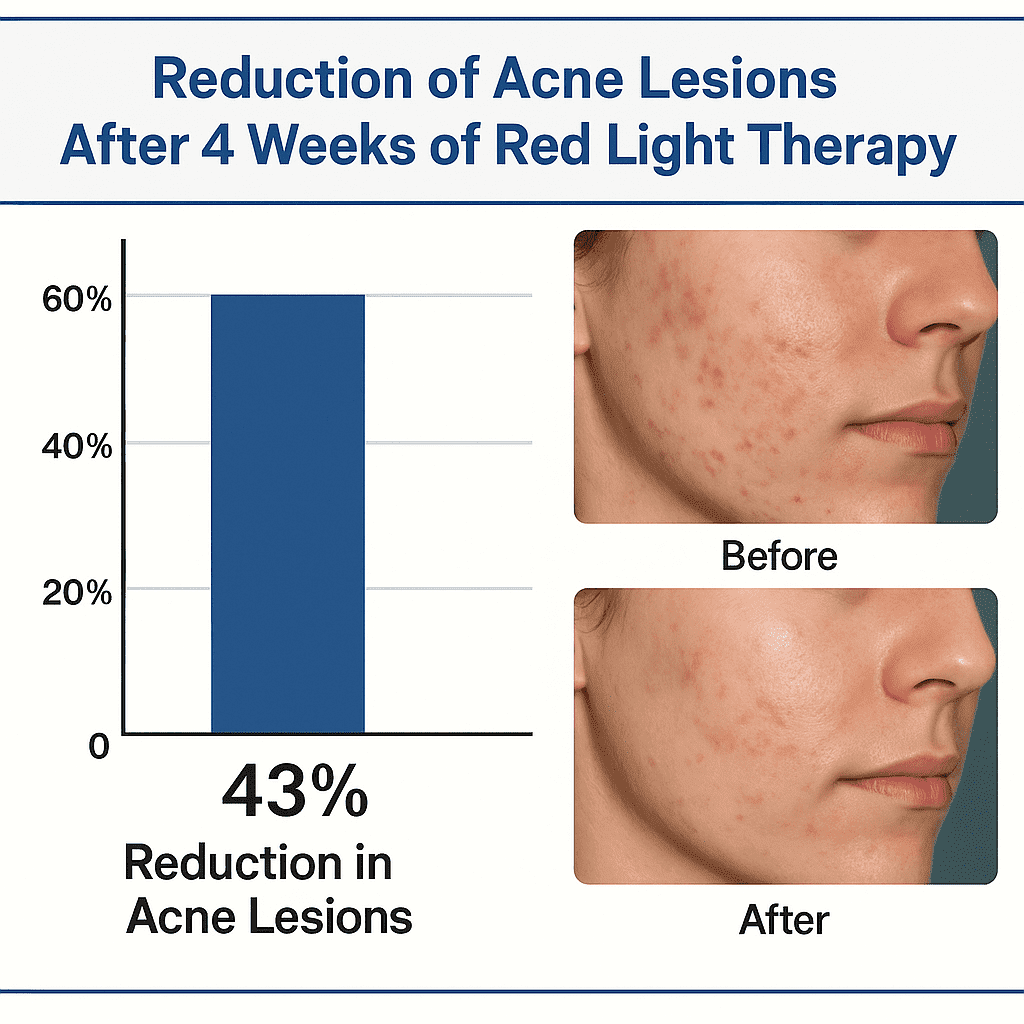
At-Home Devices vs. In-Clinic Treatments
One appealing aspect of red light therapy for acne is that it’s available in both professional clinical settings and convenient at-home formats. In-office devices tend to be larger and more powerful than home units, which can mean shorter session times or potentially stronger effects. Clinics may also perform photodynamic therapy (PDT) for severe acne, using photosensitizing agents like aminolevulinic acid (ALA), activated by red or blue light.
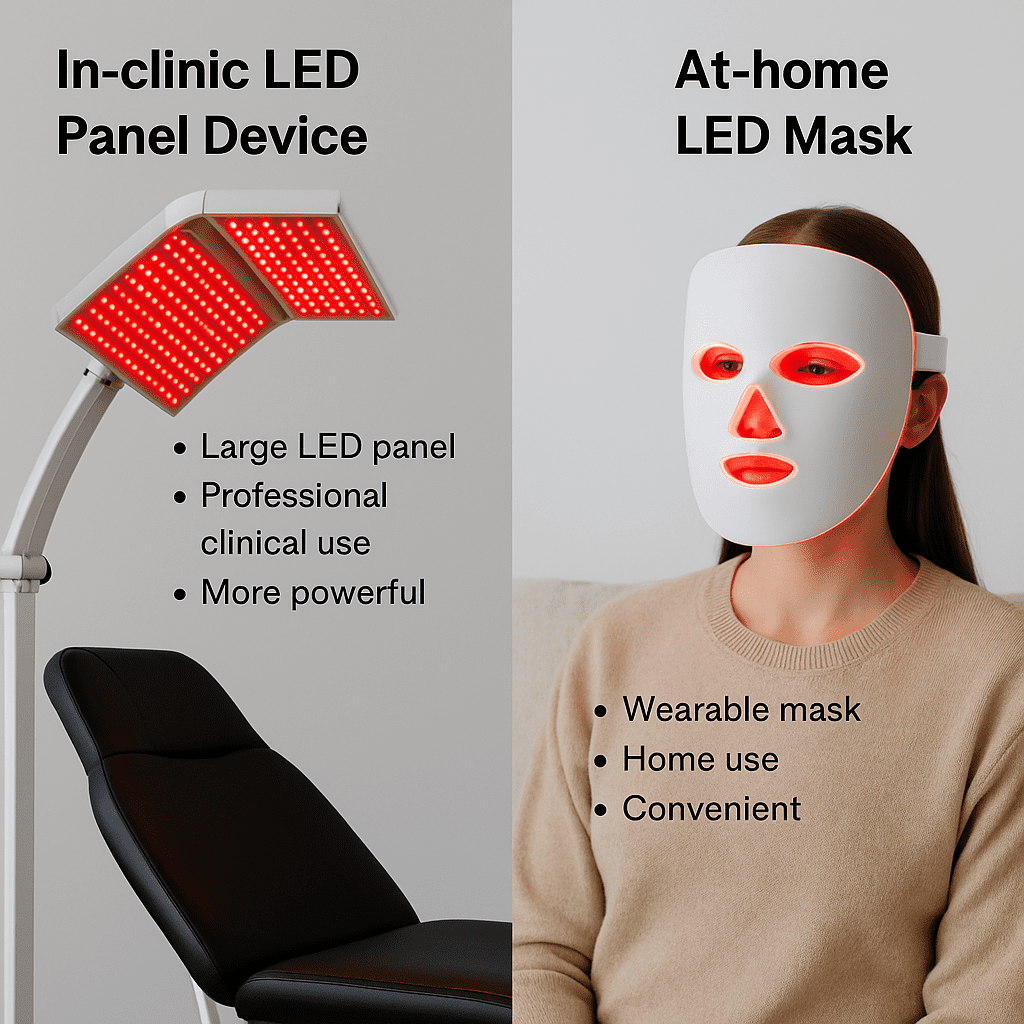
Buyer’s Guide: Choosing a Red Light Therapy Device for Acne
When shopping for a red light therapy device to use on acne, it’s important to understand the key features and specs that determine its effectiveness. The wavelength (620–670 nm), light intensity (power output), treatment area, and form factor are essential considerations. Red wavelengths target inflammation, while blue light targets acne bacteria. Many acne-focused LED masks use a dual-wavelength design for this reason.
Tips for Effective Use of Red Light Therapy on Acne
To maximize your results, it’s important to use red light therapy correctly and consistently. Start with clean, dry skin, and treat RLT like part of your daily skincare routine. Monitor your skin’s response, and be patient – improvements tend to be gradual but noticeable over time.
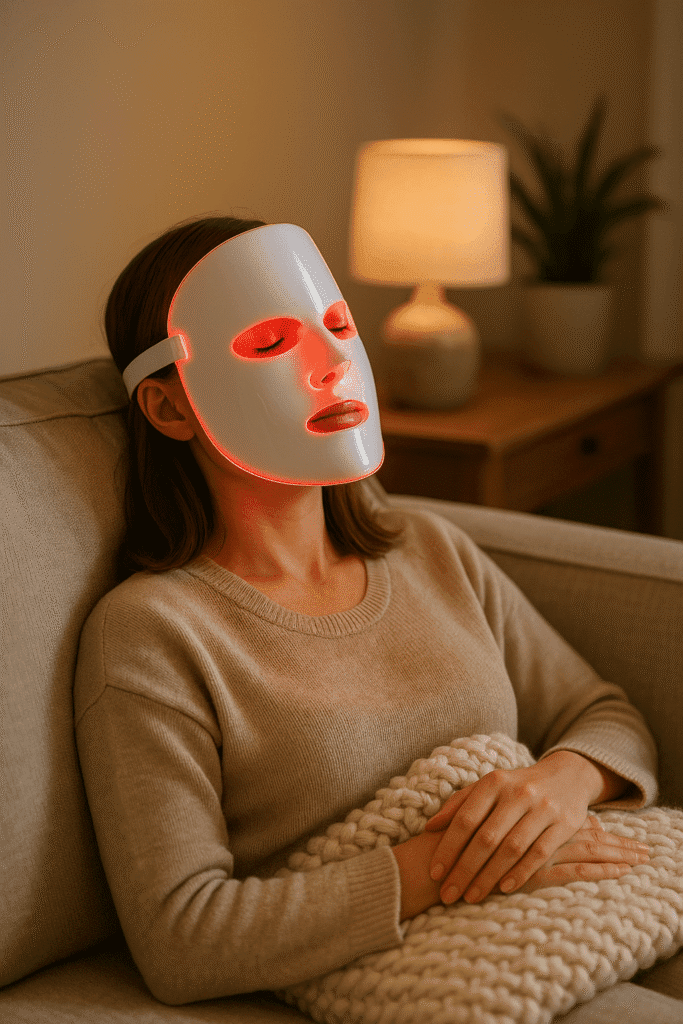
FAQ: Red Light Therapy for Acne
Deep Dive Podcast Red Light Therapy For Acne
Where to buy Light Therapy Devices For Acne
When searching for the best Red Light Therapy (RLT) devices, it’s essential to understand what to look for to ensure you’re purchasing a high-quality product that provides the necessary therapeutic benefits for acne. Below is a guide to help you make an informed choice, as well as some trusted purchasing options for global buyers.
What to Look For When Buying Red Light Therapy Devices:
- Power Output (mW/cm², NOT Wattage):
When comparing devices, the key metric to focus on is the milliwatts per square centimeter (mW/cm²). This represents the intensity of the light, which directly impacts its effectiveness. Devices with a power output in the range of 40-100 mW/cm² are ideal for acne treatment. Wattage alone is not a reliable indicator of a device’s therapeutic effectiveness. Always prioritize mW/cm² to ensure the light intensity is high enough to be effective without causing harm. - Wavelengths:
The best wavelengths for acne treatment are in the red (620-670 nm) and blue (405-420 nm) light ranges.- Red light helps reduce inflammation and accelerates skin healing.
- Blue light targets and kills the bacteria that contribute to acne (Propionibacterium acnes).
Many devices combine both red and blue light to maximize results, so consider devices that offer a dual-wavelength approach for optimal acne treatment.
- Treatment Area and Design:
- Face Masks: Ideal for treating full-face acne, as they provide even light coverage. Look for masks that fit comfortably and include eye protection.
- Handheld Devices: Great for spot treatments, such as targeting individual pimples or acne-prone areas. Look for wands or panels with adjustable settings to fine-tune your treatment.
- Panel Lights: Larger devices that can treat broader areas (face, back, chest). They are perfect for treating body acne but require you to sit at a certain distance from the light.
- Safety and Certification:
Always check if the device is FDA-cleared or has similar regulatory approvals, as this ensures it meets safety and efficacy standards. Quality devices will also not emit UV light, which can damage the skin. - Durability and Warranty:
Look for products that come with a warranty, typically at least 1 year. This reflects the manufacturer’s confidence in their device’s longevity.
Where to Buy:
- Red Light Rising (UK)
- Specialty: Known for their high-quality RLT products, including handheld devices and panels. However, they currently do not offer face masks for acne treatment.
- What to Buy: Their handheld devices and panels are suitable for acne treatments.
- Important to Note: If you’re looking for a face mask specifically, you may need to explore other options.
- Amazon (US & UK)
- Specialty: Amazon offers a wide range of RLT products, including masks and handheld devices.
- What to Buy: Look for devices that offer dual wavelength red and blue light therapy. Check user reviews for efficacy, especially for acne treatment.
- Important to Note: Always verify the device specifications (mW/cm² and wavelengths) before purchasing.
- RedLightMan (Global)
- Specialty: A reputable supplier of RLT devices. They are known for offering high-powered, effective devices suitable for acne treatment.
- What to Buy: Their Target Light and Full Body Panels are suitable options for targeting acne.
- Important to Note: You may need to follow up on your application to get approved as an affiliate partner.
- BonCharge (Global)
- Specialty: They offer a selection of red light therapy devices aimed at skin care, wellness, and biohacking.
- What to Buy: Look for their full-body panels or targeted red light therapy products for acne.
- Important to Note: Follow up on your application if you haven’t heard back yet.
Conclusion
Red light therapy has earned its place as a promising, science-backed approach to managing acne. By bathing the skin in specific wavelengths of light, it triggers biological processes that reduce inflammation, kill some acne bacteria (especially when paired with blue light), and promote healing of blemishes. It offers a gentle alternative or complement to traditional treatments, and for many, it is a worthwhile investment for clearer, healthier skin.
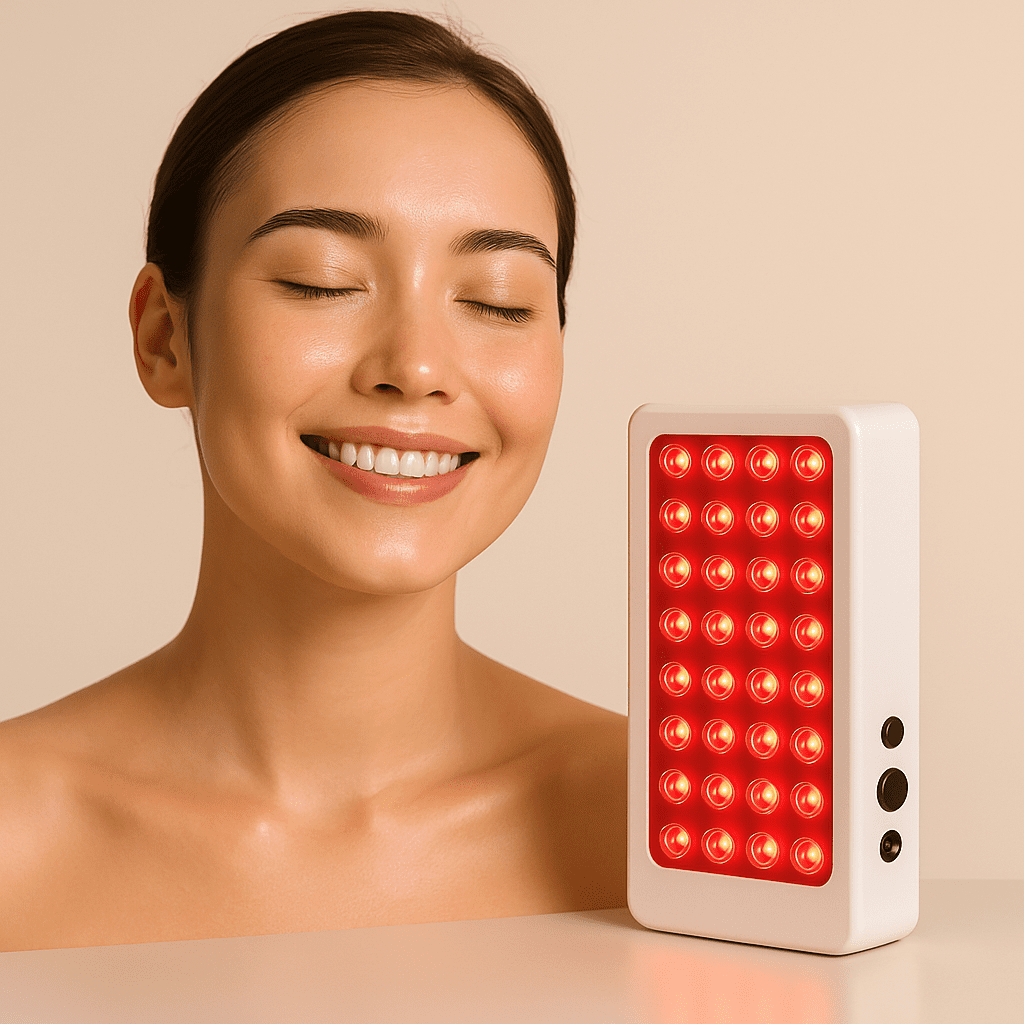
Resource Section:
Acne Breakthrough: How Laser Light Therapy Can Transform Your Skin
National Eczema Association – Red Light Therapy for Skin
DermNet NZ – How Red Light Therapy Works
PMC – 2024 Systematic Review on Light Therapy for Acne
MDPI – Study on Red LED Treatment for Acne
American Academy of Dermatology – Red Light as Adjunct for Acne
Related Content
How to Pick the Best Red Light Therapy Device for Pain Relief
Choosing the right red light therapy device depends on your treatment goals, body area, and…
Is Natural Sunlight Enough to Improve Blood Sugar Like Red Light Therapy?
Sunlight contains red and near-infrared light, so regular exposure may support metabolic health. However, red…
How Long Should You Use Red Light Therapy for Blood Sugar?
Sessions lasting 10–20 minutes are typically effective, with 15 minutes being the most common protocol…
What Wavelength of Red Light Is Best for Blood Sugar Support?
Wavelengths between 660–670 nm (red) and 810–850 nm (near-infrared) are considered most effective for metabolic…
Does Red Light Therapy Improve Insulin Sensitivity?
Early evidence suggests red light therapy may improve insulin sensitivity by increasing mitochondrial activity and…
Can Red Light Therapy Help with Diabetic Neuropathy?
Red light therapy may help relieve diabetic neuropathy symptoms like pain, tingling, and numbness by…
